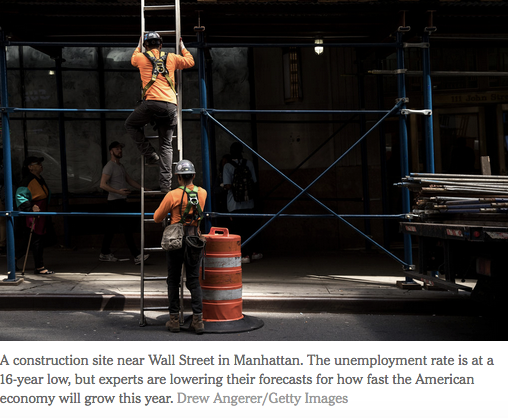The promise of faster economic growth has become a study in the triumph of hope over experience.
While the June jobs report, coming on Friday, is expected to show that hiring continued at a healthy pace last month, other recent indicators in areas like consumer spending, construction and auto sales have been decidedly less robust.
As a result, Wall Street forecasters have been busy lowering their growth estimates for the second quarter, which ended last Friday, much as they were forced to do over the first three months of the year. Economic expansion for the full year now appears unlikely to be much greater than 2 percent — about the average for the current recovery, which celebrates its eighth year this month.
While hardly terrible, it is not the burst of growth — a “Trump bump” — that many expected to result from an upturn in consumer and business sentiment after President Trump’s election.
Mr. Trump himself declared upon taking office that his policies would produce 4 percent annual growth, and just this week said on Twitter to affirm that “things are starting to kick in now.”
. . .
Still, it is a far cry from the annual gains of 3 percent or more achieved a decade ago, or the 4 percent rate in the late 1990s. Nor is it strong enough to deliver big increases in household income, which has been stagnant for decades for all but the wealthiest slice of the population.
Mr. Anderson said much of the deceleration could be linked to forces beyond the control of politicians and policy makers: an aging population in the United States and a work force that is growing much more slowly than in past decades.
“Washington seems tone deaf to this reality,” he said. “Economists have been talking about these things for years, but getting the political will together to address them has been difficult with the gridlock in Washington.”
“We had an opportunity to do some real heavy lifting on the infrastructure issue when interest rates were very low,” Mr. Anderson added. That window has now almost certainly closed, with the Fed normalizing monetary policy and gradually raising interest rates.




